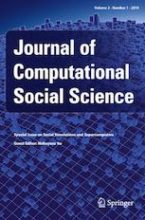The media frequently describes the 2017 Charlottesville ‘Unite the Right’ rally as a turning point for the alt-right and white supremacist movements. Social movement theory suggests that the media attention and public discourse concerning the rally may have engendered changes in social identity performance and visibility of the alt-right, but this has yet to be empirically tested. The presence of the movement on YouTube is of particular interest, as this platform has been referred to as a breeding ground for the alt-right. The current study investigates whether there are differences in language use between 7142 alt-right and progressive YouTube channels, in addition to measuring possible changes as a result of the rally. To do so, we create structural topic models and measure bigram proportions in video transcripts, spanning approximately 2 months before and after the rally. We observe differences in topics between the two groups, with the ‘alternative influencers’, for example, discussing topics related to race and free speech to a larger extent than progressive channels. We also observe structural breakpoints in the use of bigrams at the time of the rally, suggesting there are changes in language use within the two groups as a result of the rally. While most changes relate to mentions of the rally itself, the alternative group also shows an increase in promotion of their YouTube channels. In light of social movement theory, we argue that language use on YouTube shows that the Charlottesville rally indeed triggered changes in social identity performance and visibility of the alt-right.
